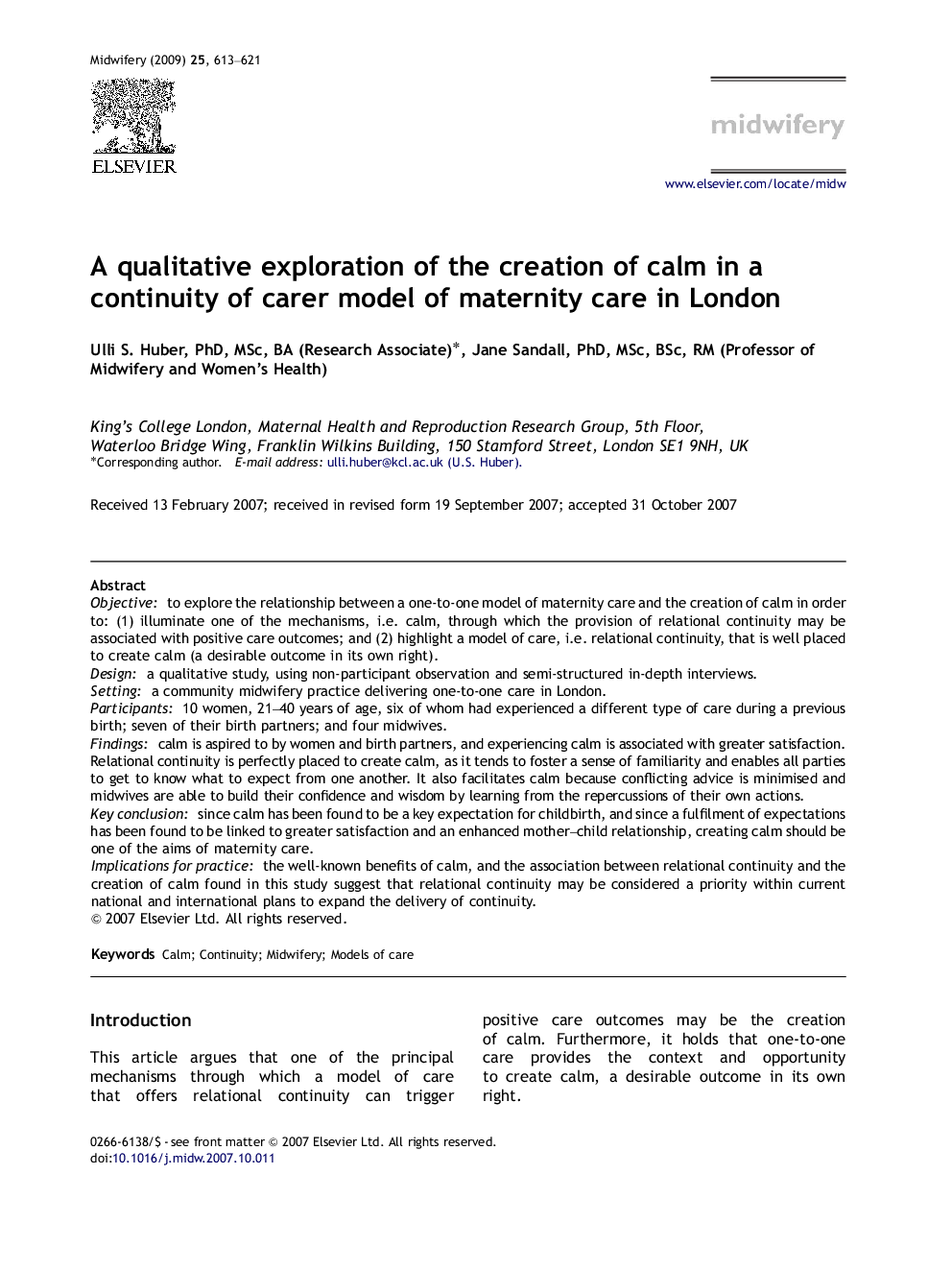| Article ID | Journal | Published Year | Pages | File Type |
|---|---|---|---|---|
| 1085489 | Midwifery | 2009 | 9 Pages |
Objectiveto explore the relationship between a one-to-one model of maternity care and the creation of calm in order to: (1) illuminate one of the mechanisms, i.e. calm, through which the provision of relational continuity may be associated with positive care outcomes; and (2) highlight a model of care, i.e. relational continuity, that is well placed to create calm (a desirable outcome in its own right).Designa qualitative study, using non-participant observation and semi-structured in-depth interviews.Settinga community midwifery practice delivering one-to-one care in London.Participants10 women, 21–40 years of age, six of whom had experienced a different type of care during a previous birth; seven of their birth partners; and four midwives.Findingscalm is aspired to by women and birth partners, and experiencing calm is associated with greater satisfaction. Relational continuity is perfectly placed to create calm, as it tends to foster a sense of familiarity and enables all parties to get to know what to expect from one another. It also facilitates calm because conflicting advice is minimised and midwives are able to build their confidence and wisdom by learning from the repercussions of their own actions.Key conclusionsince calm has been found to be a key expectation for childbirth, and since a fulfilment of expectations has been found to be linked to greater satisfaction and an enhanced mother–child relationship, creating calm should be one of the aims of maternity care.Implications for practicethe well-known benefits of calm, and the association between relational continuity and the creation of calm found in this study suggest that relational continuity may be considered a priority within current national and international plans to expand the delivery of continuity.
